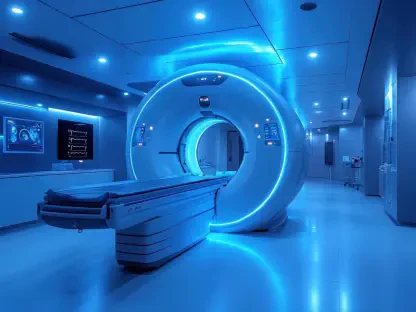The vision of a single, unified patient record for healthcare continues to be a topic of significant debate, with advocates citing potential benefits in improved care delivery and efficiency, while critics challenge the feasibility of such monumental undertakings. The implementation of large-scale projects like the Great North Care Record has illustrated the complexity and challenges involved in attempting to centralize medical records across diverse systems. While the project earned recognition for enhancing record accessibility and reducing costs, it only underscored the intricate web of elements that must be meticulously aligned to truly unify healthcare records. Insights from healthcare professionals suggest a pivot toward integrated care systems rather than striving for a monolithic record system might offer a more pragmatic path forward. This article delves into the critical elements that complicate the unification of patient records, examining the practical lessons from history and current innovations aimed at achieving an efficient, interconnected ecosystem.
Lessons from Past and Present Initiatives
The ambitious efforts to create a single healthcare record have repeatedly encountered significant obstacles, often resulting in projects failing to meet their broader objectives. Notable examples include the National Programme for IT, which sought to create a universal electronic patient record but ultimately collapsed under its massive scope and ambition. The historical challenges reveal that merely digitizing records is insufficient to achieve true integration, as the real hurdle lies in seamless connectivity among diverse healthcare providers. The concept behind the Great North Care Record was to provide a shared platform that could still recognize the fragmented nature of healthcare data. Yet, despite its initial promise, the attempt fell short of full integration, revealing that more nuanced approaches might be necessary to address the underlying issues of record fragmentation.
The “Goldilocks principle” in IT projects suggests that the size and scope of an initiative must be just right—neither too large nor too small—to ensure success. The importance of this principle becomes evident as healthcare systems strive to balance ambition with practicality. Effective integration strategies, like those employed in smaller, community-level systems, offer valuable clues. Shropshire Community Health Trust’s initiative highlights how integrating disparate clinical IT systems can connect patients and providers more meaningfully. As such, there emerges a trend towards adopting localized, community-focused solutions that better accommodate the varied needs of healthcare stakeholders. These systems emphasize collaborative data sharing, which is less about comprehensive record consolidation and more about dynamic, actionable insights that facilitate patient-centered care.
Realizing Dynamic Integration Models
The fragmented nature of healthcare systems is not just a technical hurdle but also a social, legal, and ethical challenge. The complexity of integrating disparate services, especially in multidisciplinary and multi-setting healthcare pathways, demands solutions that extend beyond static records. A pressing necessity arises for dynamic integration models that notify and coordinate care teams in real-time to ensure responsive and effective care delivery. Such models recognize that integrated care involves much more than digitized records; it encompasses fostering a cohesive team approach to patient management. These new paradigms of care emphasize the transition from merely sharing data to fostering environments where team members collaborate seamlessly, and processes for care coordination are intelligently automated.
It is crucial to address the social and cultural dimensions of these integration challenges, as they can prove to be more significant barriers than technological constraints. Change management strategies must be prioritized, with healthcare professionals encouraged to adopt new paradigms in patient care while supporting the transition to collaborative decision-making processes. This shift requires recognition that healthcare ecosystems are multifaceted and must evolve dynamically to respond to the diverse needs of patients and care providers. Enhanced communication between organizations, facilitated by technology, can transform the way healthcare is delivered and managed, moving beyond the limitations of static, historical record systems. As the industry inches toward these integration models, stakeholder engagement plays a pivotal role in redefining the landscape of healthcare delivery, with the potential to set new standards for holistic patient record management.
Embracing Community-Level Integrated Care Systems
To realize the potential of integrated care, efforts must focus on community-level systems, which offer models of shared care capable of adapting to local needs. Unlike nationwide initiatives that struggle under their weight, these smaller systems can more readily foster collaboration among providers and patients, honing in on specific regional concerns. A move towards Neighborhood Integrated Care Systems can significantly enhance how healthcare data is utilized at the community level. By connecting healthcare partners through intelligent platforms, communities can craft environments where sharing tailored patient insights supports better health outcomes.
Adopting this localized model encourages an individualized approach, aligning community resources to better address the unique challenges faced in different areas. This decentralized focus ensures that integration efforts aren’t just about hardware and platforms but about fostering environments conducive to patient-centered care. Focusing efforts on smaller scales sidesteps many of the hurdles large projects encounter, achieving a balance between technical feasibility and patient needs. It is in these scalable systems that the most promising aspects of technology-assisted integration find their stride, transforming the way records are managed, accessed, and leveraged for improved patient outcomes. As local systems gather momentum, they highlight the value of connectivity and collaboration, achieved through strategic alliances and partnerships within the healthcare ecosystem.
Strategic Future Steps for Integrated Care
The idea of creating a single, unified patient record for the healthcare industry remains a hotly debated issue. Proponents argue that such a system could significantly enhance care delivery and boost efficiency. However, critics question the practicality of these massive projects. The Great North Care Record, for instance, highlights both the complexity and the challenges faced when attempting to centralize medical records across various systems. While the initiative has been praised for making records more accessible and reducing costs, it also underscores the complex array of elements that need perfect alignment to truly unify healthcare records. Healthcare professionals often suggest a shift toward integrated care systems, rather than aiming for a single, overarching record system, could be a more realistic solution. This article explores the critical factors that complicate patient record unification, drawing lessons from past experiences and examining ongoing innovations aimed at creating an efficient and interconnected healthcare ecosystem.









